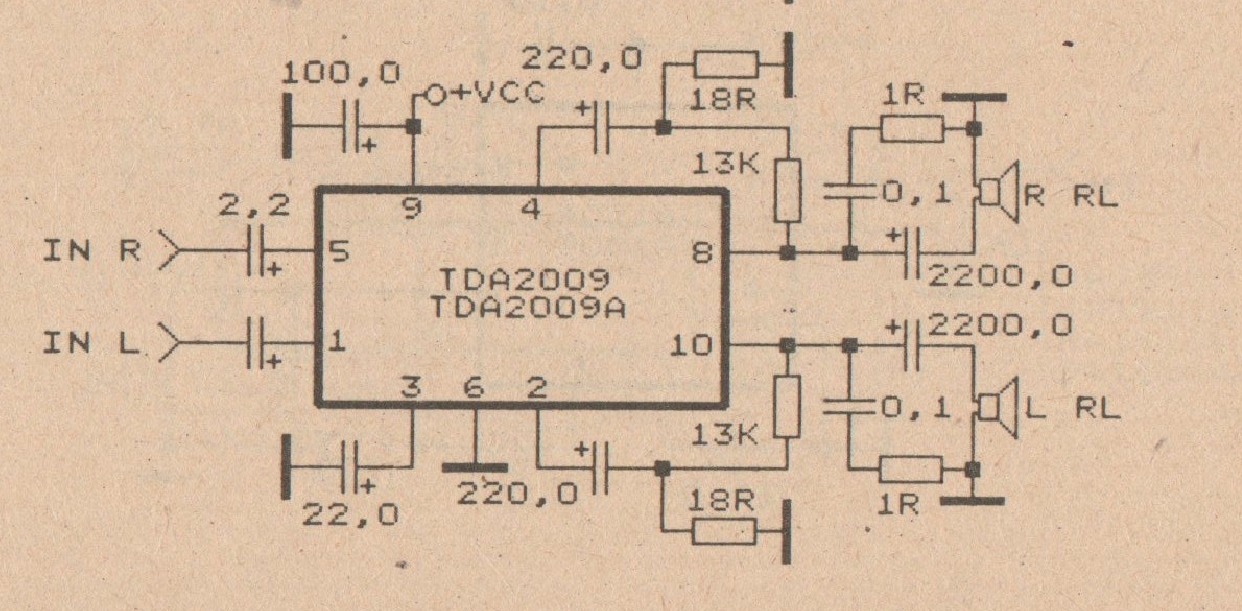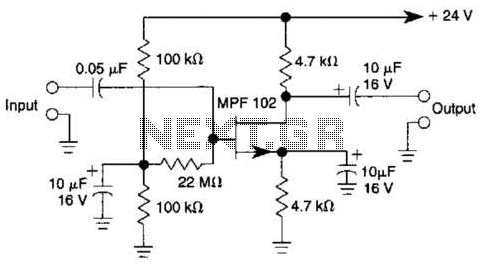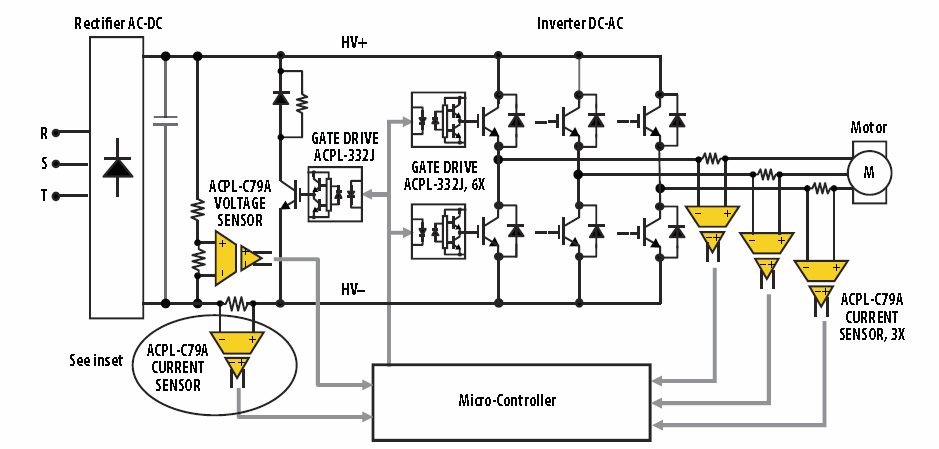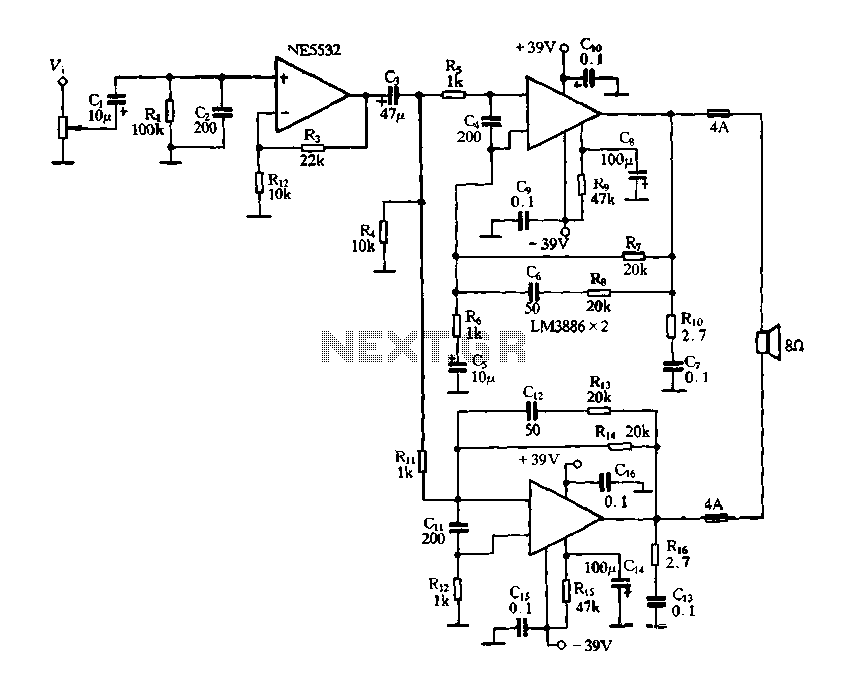
Cascode - common collector amplifier
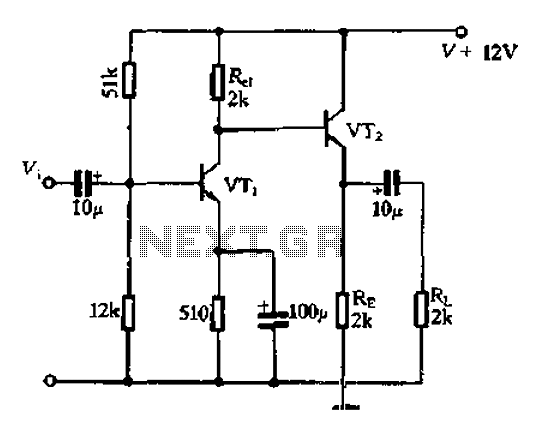
Available RC coupling between its two stages can also be directly coupled. This is in addition to the common-emitter total radio circuit configuration, which is widely used. Outside the previously described common-emitter circuit, a total group or common-emitter circuit can be cascaded to form a multistage amplifier. The output impedance of the previous stage and the input impedance of the subsequent stage vary greatly, which causes a significant reduction in the gain of the front stage. Especially in the broadband RC coupled amplifier, the input capacitance of the post-stage is directly parallel to the output terminal of the front stage. In addition to the input capacitance of the post-stage and the distributed capacitance from the wiring, there is also the capacitance from the intermediate tube, denoted as Cbe. Transistors are coupled across an equivalent capacitance, known as Miller capacitance, represented as Cm (1 + Rv). The sum of these capacitance values can be large (ranging from ten pF to several thousand pF), leading to a deterioration in the high-frequency response of the amplifier. Furthermore, in a multistage common-emitter wideband amplifier, the interaction between the front and rear stage circuits complicates the design and tuning of the circuits.
The described circuit configuration utilizes RC coupling to facilitate signal transfer between amplifier stages. This method can enhance the versatility of a common-emitter amplifier, allowing for direct coupling between stages when necessary. The common-emitter configuration is renowned for its ability to provide significant voltage gain, but it is essential to consider the implications of cascading multiple stages.
In a multistage amplifier, the output impedance of the preceding stage and the input impedance of the following stage must be carefully matched to avoid gain loss. The variation in these impedances can lead to an undesired reduction in the gain of the first stage, particularly in applications requiring wide bandwidth. The inclusion of RC coupling mitigates some of these effects by allowing for better impedance matching, yet it introduces its own challenges.
The impact of capacitance on amplifier performance cannot be overstated. The input capacitance of the subsequent stage, when placed in parallel with the output of the previous stage, contributes to the overall capacitance seen by the amplifier. This is compounded by the distributed capacitance present in the circuit layout, as well as the intrinsic capacitance of the active devices used, such as transistors. The Miller effect becomes particularly significant in this context; the equivalent capacitance, referred to as Miller capacitance, effectively increases the load seen by the preceding stage, which can adversely affect the high-frequency response of the amplifier.
In practical applications, the total capacitance can accumulate to values that significantly hinder the performance of the amplifier, particularly at higher frequencies. This necessitates careful circuit design and tuning, as the interactions between multiple stages can complicate the overall behavior of the amplifier. Designers must consider these factors when creating multistage amplifiers to ensure that performance specifications are met, particularly in high-frequency applications where bandwidth is critical. Available RC coupling between its two stages can also be directly coupled. It is in addition to the common-emitter total radio circuit configuration o road fork a widely used o utside the common-emitter circuit previously described total group or common-emitter circuit cascaded to form a multistage amplifier, since the output impedance of the previous stage and after stage input impedance varies greatly, cause the front stage gain reduction is much smaller. Especially in the broadband RC coupled amplifier, since the post-stage input capacitance also directly parallel to the front stage output terminal, in addition to the post-stage input capacitance and distributed capacitance crystal wiring outside the intermediate tube capacitance Cbe, there c transistors coupled across an equivalent capacitance between -b [called Miller capacitance, Cm (1 + Rv).
S]. The sum of these capacitance values tend to be large (bulk ten pF to several thousands pF), so that the high frequency response of the amplifier port deterioration Further, in the multi-stage common-emitter wideband amplifier, because greater impact between the front and rear stage circuit, making the design and tuning circuits are complicated.
The described circuit configuration utilizes RC coupling to facilitate signal transfer between amplifier stages. This method can enhance the versatility of a common-emitter amplifier, allowing for direct coupling between stages when necessary. The common-emitter configuration is renowned for its ability to provide significant voltage gain, but it is essential to consider the implications of cascading multiple stages.
In a multistage amplifier, the output impedance of the preceding stage and the input impedance of the following stage must be carefully matched to avoid gain loss. The variation in these impedances can lead to an undesired reduction in the gain of the first stage, particularly in applications requiring wide bandwidth. The inclusion of RC coupling mitigates some of these effects by allowing for better impedance matching, yet it introduces its own challenges.
The impact of capacitance on amplifier performance cannot be overstated. The input capacitance of the subsequent stage, when placed in parallel with the output of the previous stage, contributes to the overall capacitance seen by the amplifier. This is compounded by the distributed capacitance present in the circuit layout, as well as the intrinsic capacitance of the active devices used, such as transistors. The Miller effect becomes particularly significant in this context; the equivalent capacitance, referred to as Miller capacitance, effectively increases the load seen by the preceding stage, which can adversely affect the high-frequency response of the amplifier.
In practical applications, the total capacitance can accumulate to values that significantly hinder the performance of the amplifier, particularly at higher frequencies. This necessitates careful circuit design and tuning, as the interactions between multiple stages can complicate the overall behavior of the amplifier. Designers must consider these factors when creating multistage amplifiers to ensure that performance specifications are met, particularly in high-frequency applications where bandwidth is critical. Available RC coupling between its two stages can also be directly coupled. It is in addition to the common-emitter total radio circuit configuration o road fork a widely used o utside the common-emitter circuit previously described total group or common-emitter circuit cascaded to form a multistage amplifier, since the output impedance of the previous stage and after stage input impedance varies greatly, cause the front stage gain reduction is much smaller. Especially in the broadband RC coupled amplifier, since the post-stage input capacitance also directly parallel to the front stage output terminal, in addition to the post-stage input capacitance and distributed capacitance crystal wiring outside the intermediate tube capacitance Cbe, there c transistors coupled across an equivalent capacitance between -b [called Miller capacitance, Cm (1 + Rv).
S]. The sum of these capacitance values tend to be large (bulk ten pF to several thousands pF), so that the high frequency response of the amplifier port deterioration Further, in the multi-stage common-emitter wideband amplifier, because greater impact between the front and rear stage circuit, making the design and tuning circuits are complicated.
